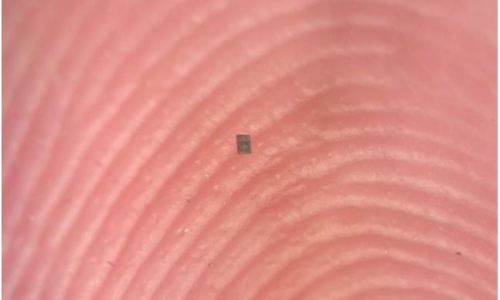


 3:14:27
3:14:27  2024-12-18
2024-12-18  724
724

In 2018, NASA mission planners selected the Jezero Craters as the future landing site of the Perseverance rover. This crater was a natural choice, as it was once an ancient lake bed, as evidenced by the delta fan at its western edge.
On Earth, these features form in the presence of flowing water that gradually deposits sediment over time. Combined with the fact that the Jezero Crater's delta feature is rich in clays, this makes the region a prime target to search for biosignatures – evidence of past (and maybe present) life on Mars!
In recent news, NASA announced that the Perseverance rover had reached the top of Jezero Crater’s rim at a location the science team calls Lookout Hill. The rover spent the previous three and a half months climbing the rim, covering a distance of 500 vertical meters (1,640 vertical feet) and making science observations along the way.
Now that it has crested the rim, Perseverance can begin what the mission team calls its Northern Rim campaign. Over the next year, the rover is expected to drive 6.4 kilometers (4 miles) and visit up to four sites of interest where it will obtain geological samples.
Since it landed in the Jezero Crater in February 2021, Perseverance has completed four science campaigns. This includes the Crater Floor, Fan Front, Upper Fan, and Margin Unit based on where the rover was obtaining samples from.
During the first campaign, the rover visited features around its landing site – like the Máaz formation – where it obtained several rock and atmospheric samples, and some witness samples for contamination assessment. The two campaigns that followed saw the rover explore different sections of Jezero's delta fan and obtain samples of rock and clay.
The fourth campaign, meanwhile, consisted of the rover examining marginal carbonate rocks that circle the upper edge of the Jezero Crater.
The science team calls Perseverance's fifth campaign the Northern Rim because its route covers the northern part of the southwestern section of Jezero's rim. The site was selected so that the rover could explore a region of Mars, unlike anything it has investigated before.
Ken Farley, a project scientist for Perseverance at Caltech, explained in a NASA press release:
"The Northern Rim campaign brings us completely new scientific riches as Perseverance roves into fundamentally new geology.
It marks our transition from rocks that partially filled Jezero Crater when it was formed by a massive impact about 3.9 billion years ago to rocks from deep down inside Mars that were thrown upward to form the crater rim after impact.
These rocks represent pieces of early Martian crust and are among the oldest rocks found anywhere in the solar system. Investigating them could help us understand what Mars — and our own planet — may have looked like in the beginning."
Now that Perseverance has crested and moved on from Lookout Hill, the rover is heading to a rocky outcrop about 450 m (1,500 feet) on the other side of the rim known as witch Hazel Hill.
Said Candice Bedford, a Perseverance scientist from Purdue University:
"The campaign starts off with a bang because Witch Hazel Hill represents over 330 feet [~100 m] of layered outcrop, where each layer is like a page in the book of Martian history.
As we drive down the hill, we will be going back in time, investigating the ancient environments of Mars recorded in the crater rim. Then, after a steep descent, we take our first turns of the wheel away from the crater rim toward 'Lac de Charmes,' about 2 miles [3.2 km] south."
Located on the plains beyond the rim, the Lac de Charmes region is of interest to the mission team because it is less likely to have been affected by the impact that led to the Jezero Crater.
Beyond that, the rover will travel about 1.6 kilometers (1 miles) back up the rim to investigate an outcropping of blocks (megabreccia) that may be the remains of ancient bedrock broken by another impact. This was the Isidis impact, which occurred 3.9 billion years ago and led to the formation of the Isidis Planitia basin in the Northern Lowlands.
Investigating this site could provide valuable insight into a major surface-reshaping event that took place during the Noachian Period on Mars. This geological epoch saw extensive erosion by flowing water, as indicated by the many river valley networks dated to the period.
It is also during the Noachian that the Tharsis Bulge is believed to have formed, indicating that Mars was still geologically active. As always, the ultimate goal is to find biosignatures from this "warmer, wetter" period that indicate that Mars could have had life (similar to Earth at the time).
The Perseverance science team also shared information on the rover, their science operations, and future plans at a media briefing on Thursday, December 12th, during the annual meeting of the American Geophysical Union (AGU) in Washington.
As Steven Lee, the deputy project manager for the Perseverance mission at NASA's Jet Propulsion Laboratory, said during the briefing, "During the Jezero Crater rim climb, our rover drivers have done an amazing job negotiating some of the toughest terrain we've encountered since landing.
"They developed innovative approaches to overcome these challenges – even tried driving backward to see if it would help – and the rover has come through it all like a champ. Perseverance is 'go' for everything the science team wants to throw at it during this next science campaign."
Reality Of Islam |
|

A tiny robo

By applying

Stanford, C

A new study
 9:3:43
9:3:43
 2018-11-05
2018-11-05
10 benefits of Marriage in Islam
 7:5:22
7:5:22
 2019-04-08
2019-04-08
benefits of reciting surat yunus, hud &
 9:45:7
9:45:7
 2018-12-24
2018-12-24
advantages & disadvantages of divorce
 11:35:12
11:35:12
 2018-06-10
2018-06-10
 6:0:51
6:0:51
 2018-10-16
2018-10-16
 2:42:26
2:42:26
 2023-02-02
2023-02-02
 9:30:2
9:30:2
 2021-11-12
2021-11-12
 8:21:9
8:21:9
 2018-06-21
2018-06-21
 6:0:8
6:0:8
 2023-03-19
2023-03-19
 8:25:12
8:25:12
 2022-03-09
2022-03-09
 7:34:7
7:34:7
 2023-02-28
2023-02-28
 8:4:21
8:4:21
 2022-01-08
2022-01-08
 5:41:46
5:41:46
 2023-03-18
2023-03-18
| LATEST |